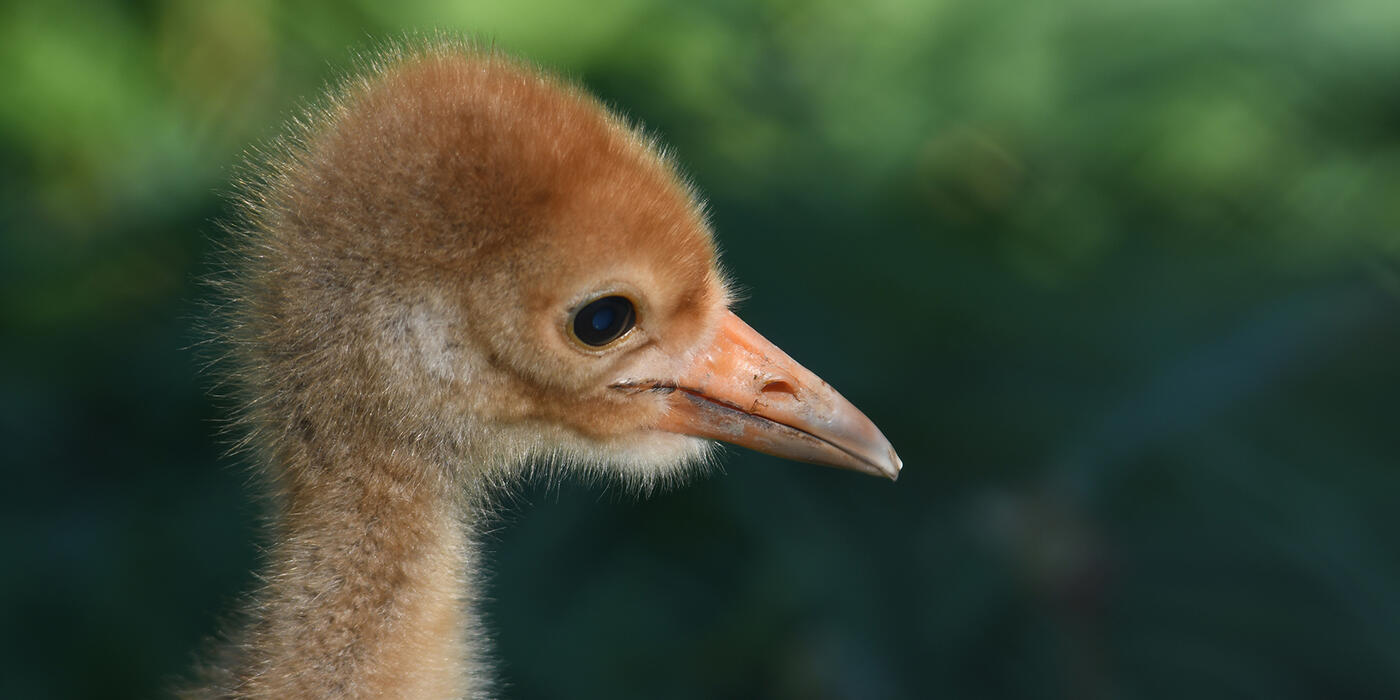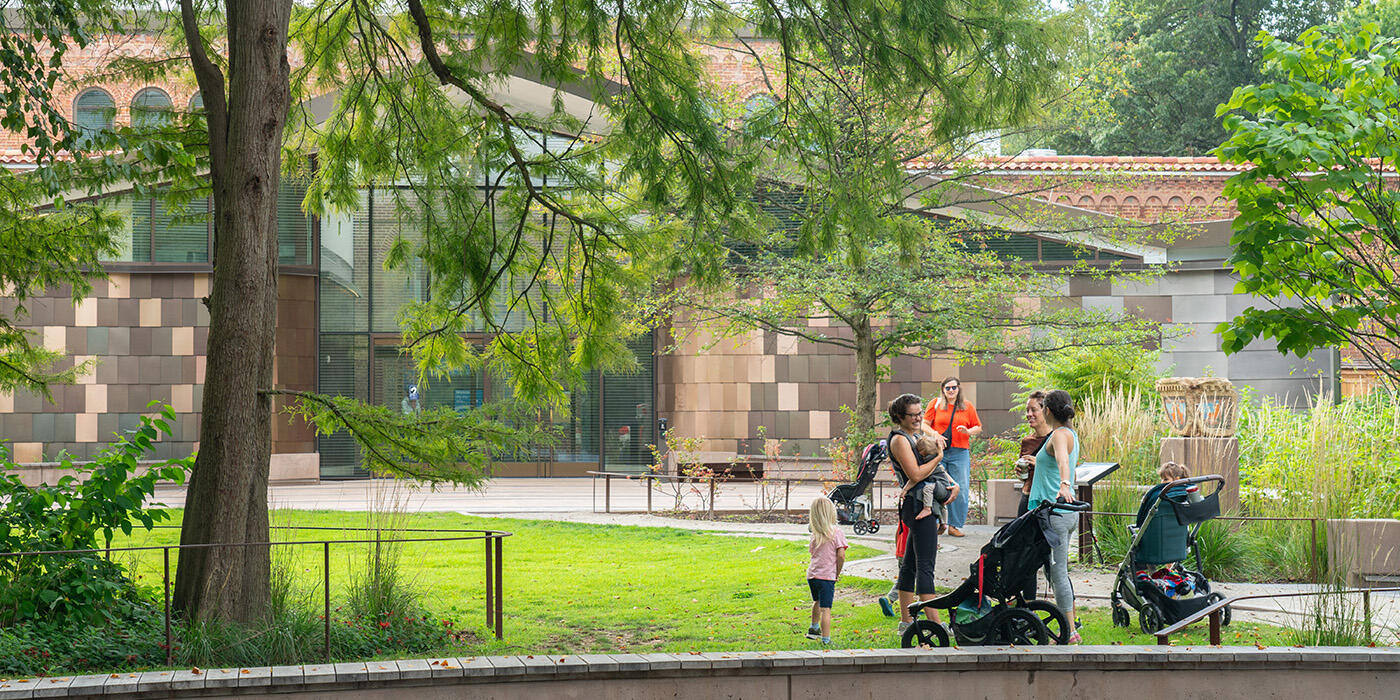Meet Our Rare and Endangered Crane Chicks

In the foothills of the Shenandoah Valley, three fluffy feathered friends joined the flock at the Smithsonian’s National Zoo and Conservation Biology Institute’s Front Royal, Virginia, campus. In late May and early June, one whooping crane and two red-crowned crane chicks—called “colts”—emerged from their shells. The colts’ arrival is cause for celebration—respectively, they are the most and second-most rare species of crane in the world—and both are endangered.
Because the parents are doing such a great job of caring for their colts, keepers are monitoring the family from a distance and letting them bond. Zoo veterinarians conducted a brief exam on all three colts July 15, and they all appear to be healthy and strong. When the colts are 2-and-a-half months old, veterinarians will administer additional vaccines and take blood samples, which will be sent to an off-site lab for analyses. The keepers will learn shortly thereafter if the colts are males, females or a combination!
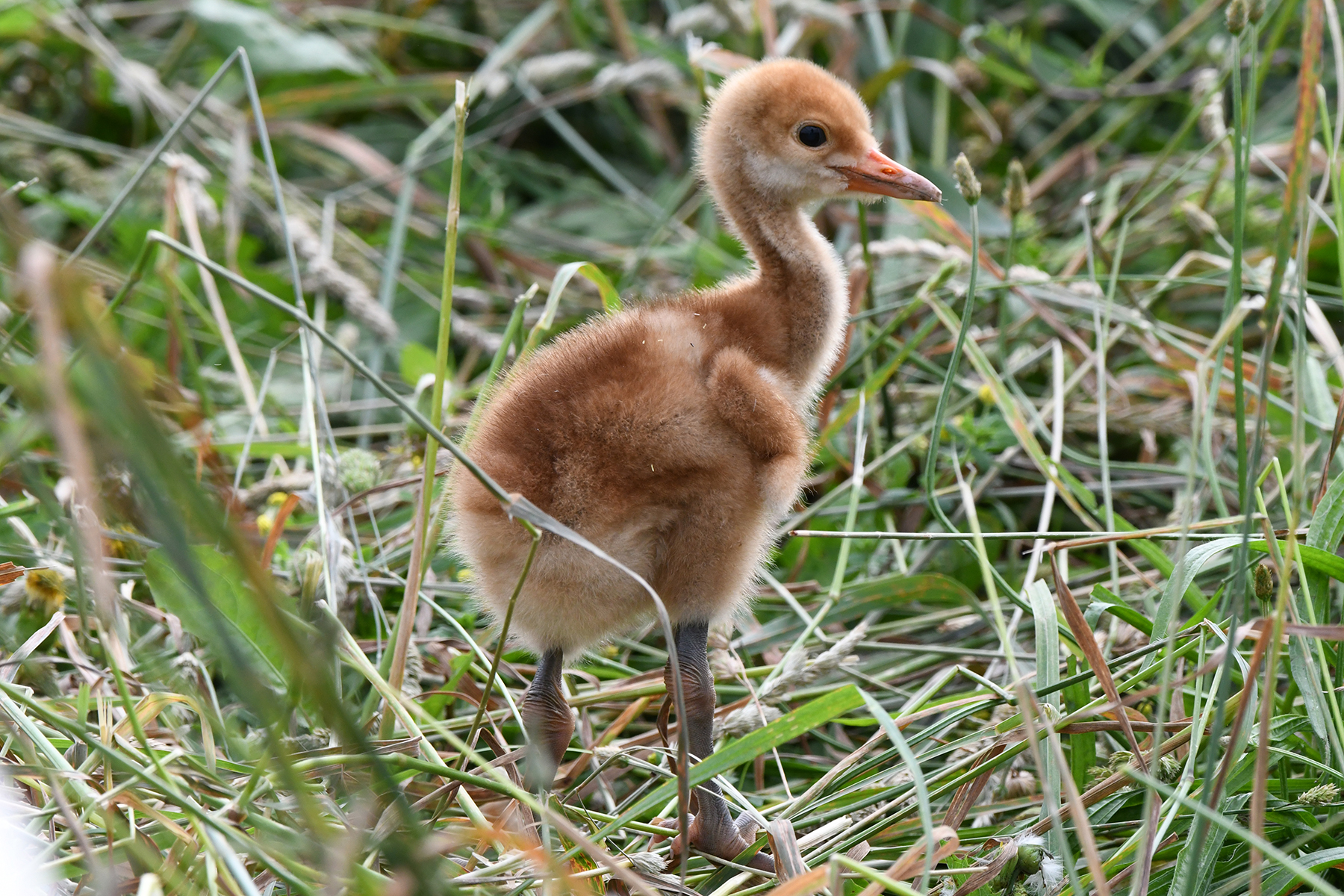
Over the years, 12 red-crowned cranes have hatched at the Zoo’s Virginia campus.
“Cranes are very endearing,” says Chris Crowe, bird keeper. “They mate for life and are devoted parents, especially during the colts’ first eight months. In that time, they consistently put their offspring’s needs ahead of their own. As their caretaker, it is rewarding to see that our cranes have everything they need to successfully raise their young. Our colts are healthy and growing fast—as much as an inch a day!”
The red-crowned crane colts hatched May 30 and June 1 to 19-year-old mother, Tara, and 11-year-old father, Prince. Crowe is encouraged by the parents’ attentiveness, noting that they keep a close eye on their young and always feed the colts before themselves. When the babies were small, Tara dutifully brooded (covered) them at night and whenever it rained.
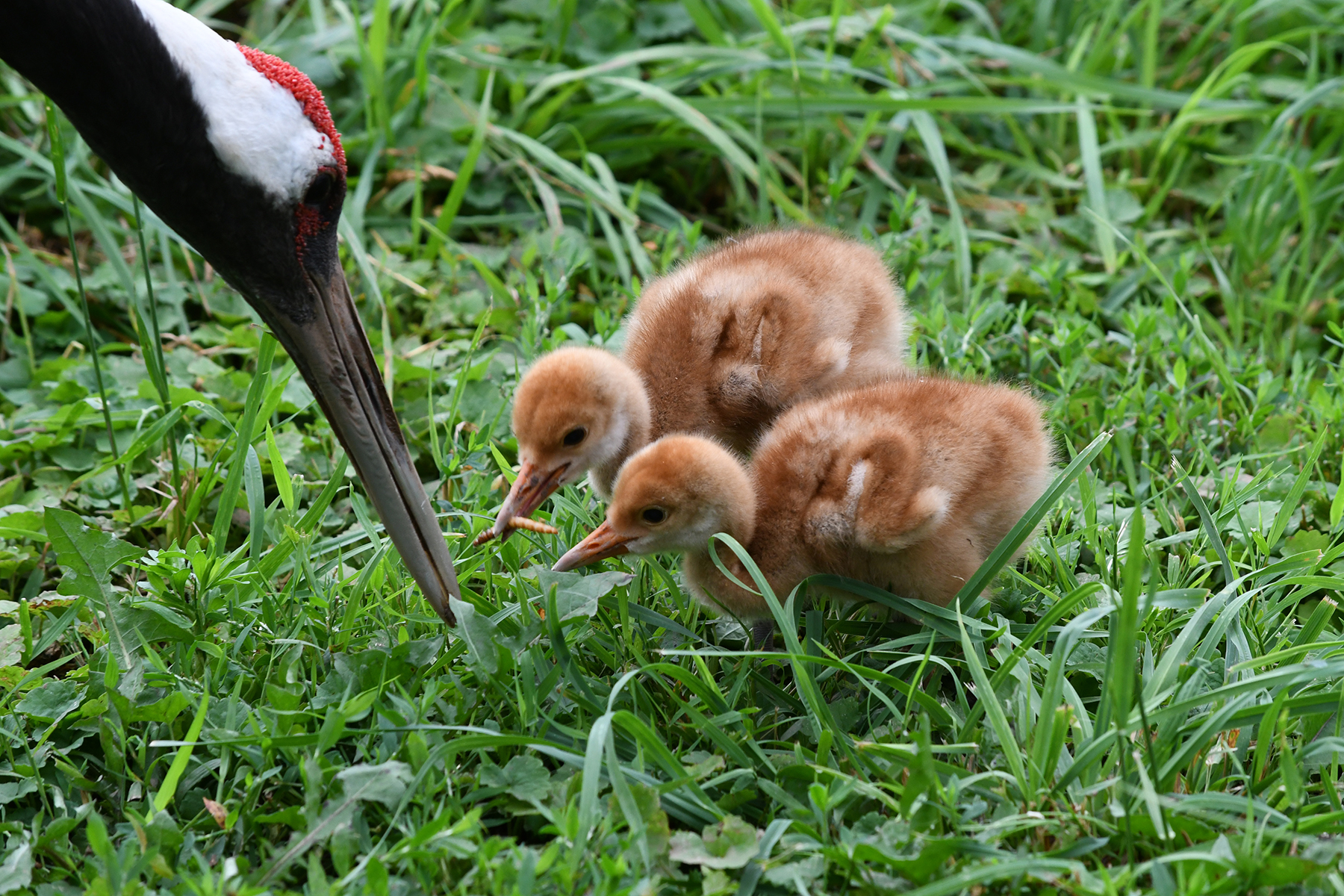
These two red-crowned crane colts are the third and fourth offspring for their parents, Tara and Prince.
As the colts grow and become more independent, keepers look forward to watching their personalities develop. They wonder if the youngsters will take after Tara (who is confident and bold) or Prince (who tends to be reserved). Together, Tara and Prince have contributed four offspring to their species’ survival—including these two colts! Over the years, 12 red-crowned cranes have hatched at the Zoo’s Virginia campus.
Native to Japan, Mongolia, China and Russia, red-crowned cranes have featured prominently in Asian art. They are easily identifiable by the distinctive, bright-red patch atop their heads, black plumage on their face and the front of their neck, and snow white feathers along the back of their head that cascades down their neck. As much as they are revered, they continue to face threats in their native habitat, including the loss and degradation of wetlands in their breeding and wintering grounds due to land development. Conservationists estimate less than 2,700 red-crowned cranes remain in Eastern Asia, making them the second-rarest species of crane in the world.
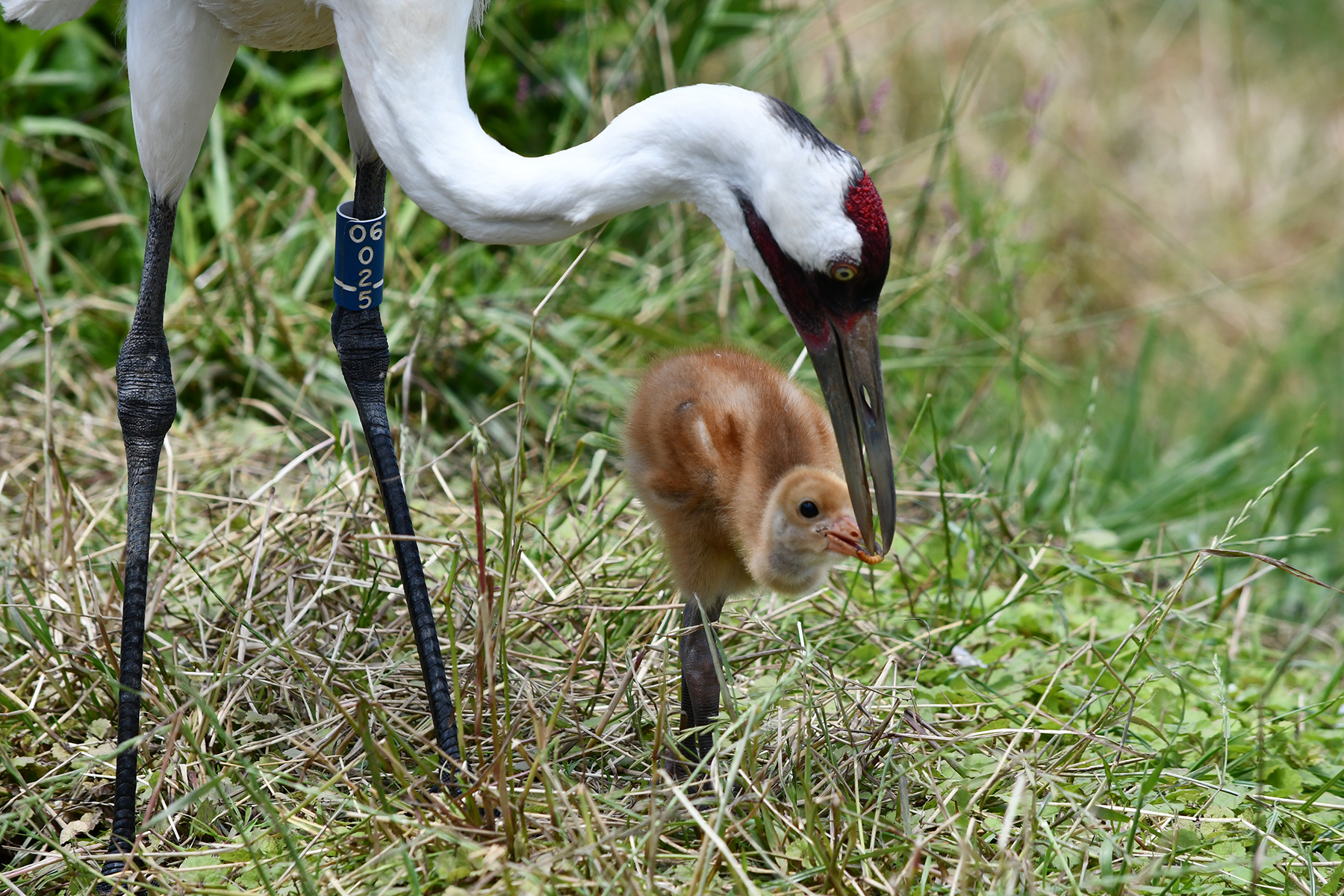
Whooping cranes are devoted parents, says keeper Chris Crowe, and always feed their colts before themselves.
The rarest—a whooping crane—hatched June 1. In spring, a pair under human care at the International Crane Foundation produced two fertile eggs. To increase the chance of both eggs surviving, ICF staff gave one of the eggs to the Smithsonian, and kept the other with the parents.
The bird team took the then-egg under their wing May 29. An 18-year-old female named Tehya and a 28-year-old male named Goliath were selected to serve as surrogate parents. This gave the pair a chance to exercise their natural parental behaviors. Together, Tehya and Goliath have raised three colts, including the Smithsonian’s first whooping crane hatched in 2022.

A whooping crane colt strolls through the grasses in its habitat.
Whooping cranes live in monogamous mated pairs and have elaborate courtship rituals that reinforce their pair bonds—including unison calls and dancing! Vocal communication is essential to these birds, who call to one another to indicate breeding, danger, flight or to strengthen bonds with their mates. The secret to this crane’s amazing volume and pitch lies in its trachea, which coils about 9 inches into its sternum. Altogether, a whooping crane’s trachea measures 5 feet in length, which is as long as this bird is tall!
Hear our whooping cranes trumpet!
Both Tehya and Goliath are very attentive to their foster colt’s needs and protective; often, they use a variety of defensive displays to keep the animal care team at bay. The colt is very curious about its surroundings and has taken an interest in watching both its parents and nearby wild songbirds! Colts fledge when they are between 80 and 100 days old, but they will stay with their parents for up to nine months.
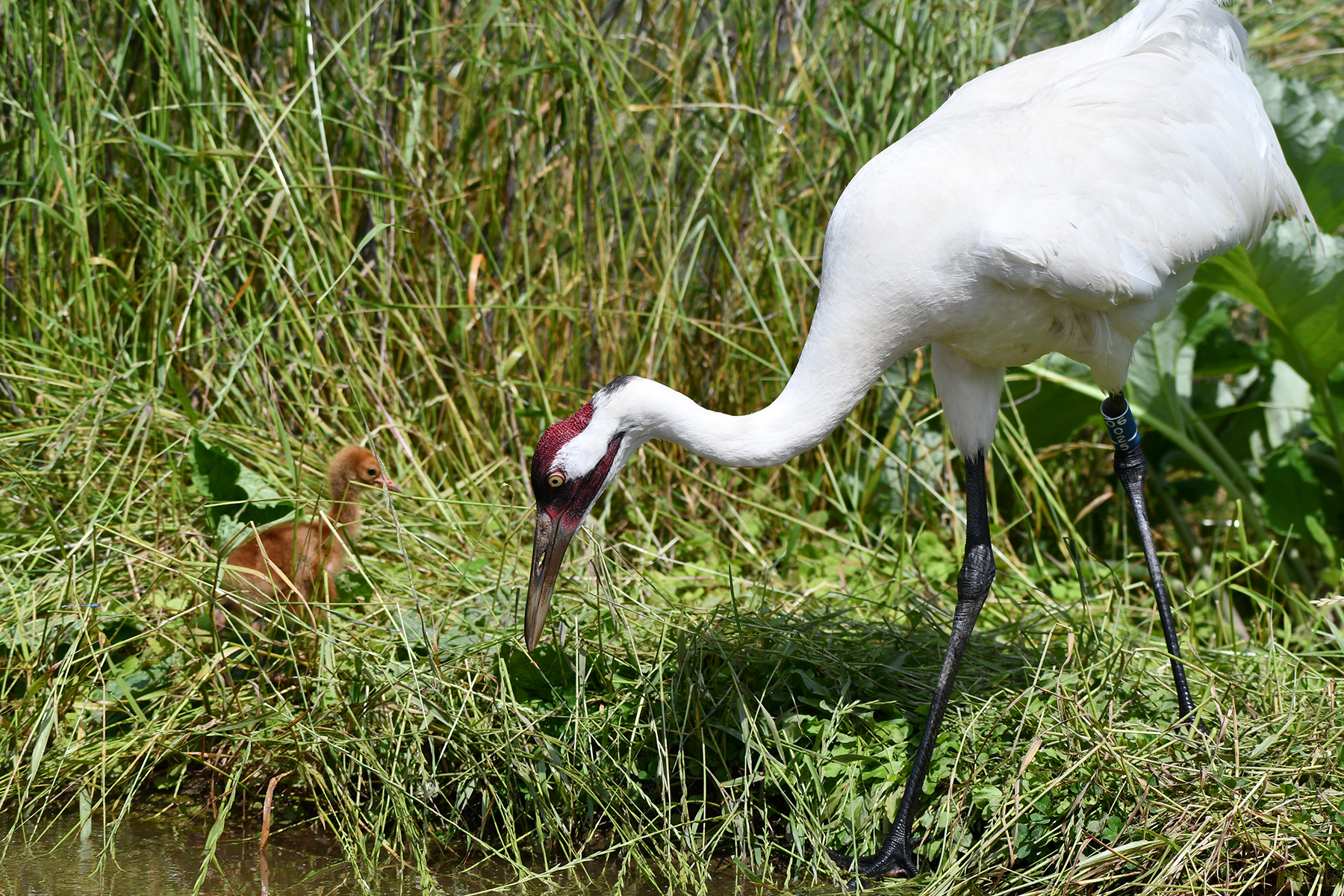
Whooping cranes Tehya and Goliath are very attentive to and protective of their foster colt.
Whooping cranes live in prairie wetlands alongside shallow lakes, ponds and marshes that offer an abundance of vegetation, food and protection from potential predators. Habitat destruction, hunting, poaching (largely for their feathers and eggs), climate change, natural disasters and oil spills have contributed to the decline of whooping cranes in North America. In 1941, only 21 whooping cranes remained in the wild. Today, approximately 700 whooping cranes live in the wild and 130 live in human care.
When the red-crowned and whooping crane colts reach sexual maturity, they will enter the Association of Zoos and Aquariums’ Species Survival Plan. SSP scientists determine which animals to breed by considering their genetic makeup, health and temperament, among other factors. Eventually, they will be matched with mates and may be sent to other zoos to contribute to their species’ survival.
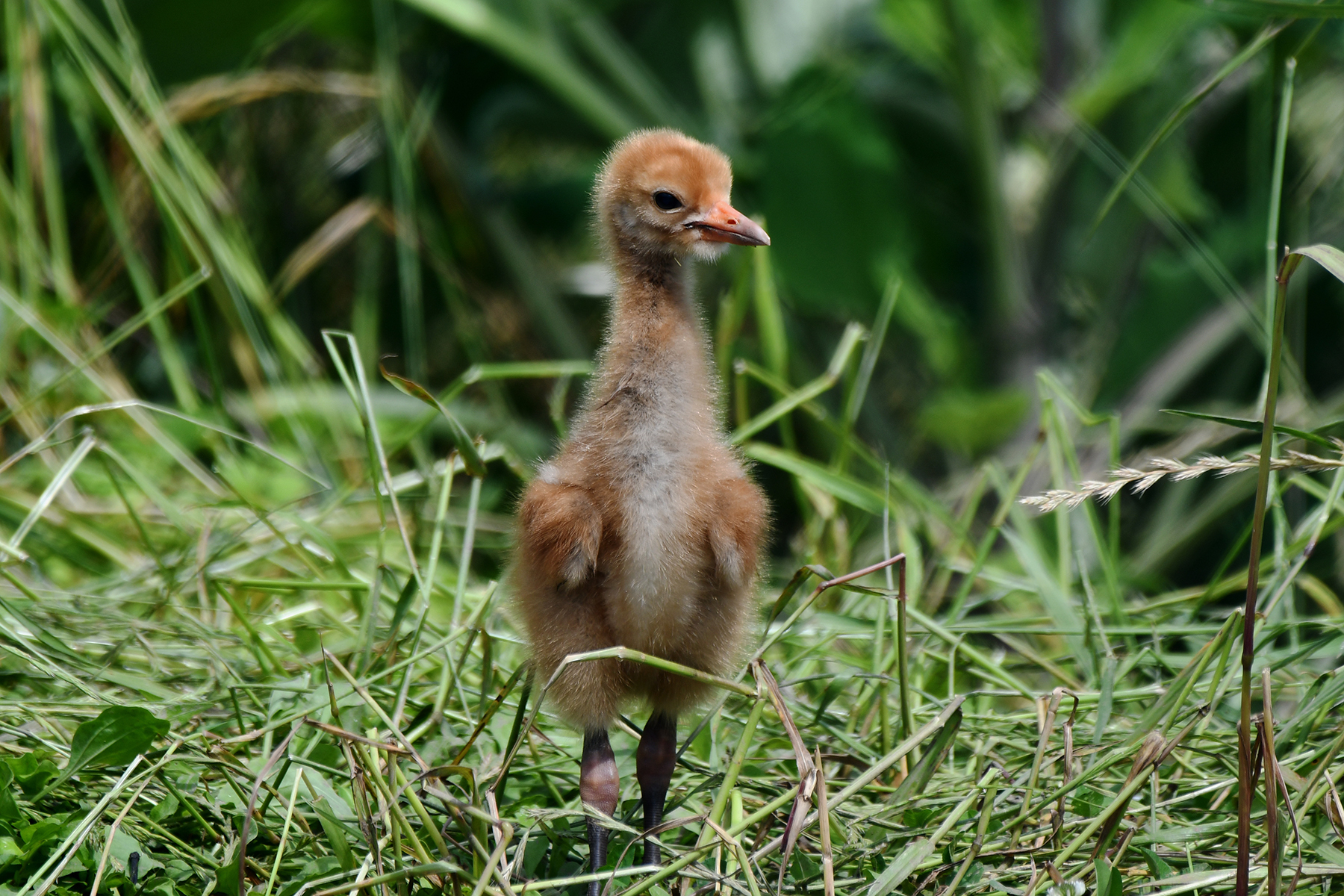
To help whooping cranes, protect waterways and wetland habitats!
“These endangered birds need our help to survive and thrive in the wild,” says Crowe. “The best way to protect cranes is to protect their habitats. Help keep wetlands clean by refraining from littering and being mindful of the pesticides and fertilizers you use around your home. Some of those chemicals may runoff into wetlands where cranes and their prey—invertebrates, fish, amphibians and small mammals—live, which could make them ill, or worse. We want to keep these animals alive in the wild, so do your part to keep our waterways clean!”
This story appears in the August 2024 issue of National Zoo News. See whooping cranes at the Zoo’s Bird House. Looking for more ways to help birds? Check out our hummingbird nectar recipe and 7 Simple Actions to Live Bird Friendly.

